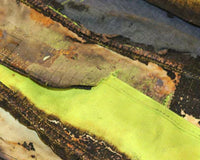Once you’ve determined whether or not you will be faced with an Arc Flash Hazard, you’ve carefully reviewed all the steps of the job, you have your tools required, and have selected any necessary equipment to get the job done, then it’s time to choose your Arc Flash Personal Protective Equipment (Arc Flash PPE).
But what do you need to consider before you pick it out? Well, we have chosen 3 key concepts to look at before you don the “space suit” and march out for lift-off.
1: What are the hazards that I’m protecting myself from?
Arc Flash is tricky because it’s not only the flames of the explosion that you need to be concerned about. There is a long list of other associated hazards.
Imagine holding lightning in a bottle and…oops…you drop the bottle! In a split second you will have been exposed to heat equivalent to the surface of the sun, pieces of flying shrapnel similar to those of a hand grenade going off, blast pressures that would make you feel like you were sat on by an elephant, and a light bright enough to blind you.
All in all, you have a lot of hazards to deal with.
2: Am I covered head to toe?
So now when you think about Arc Flash PPE, I hope you are not only thinking about a shirt and pants or coveralls.
You need to be thinking about your entire body and 3 of your senses--sight, hearing, and touch (it probably smells bad too but we haven’t gone to wearing nose plugs…yet).
If you’ve ever had the chance to review incident reports with pictures you will notice one thing that is very consistent.
The worst burns are on people’s forearms (rolled up sleeves) and their faces (no face shield)
Anyway, let’s go through it.
Sight
Your eyes will need to be protected from two things, ballistics (flying pieces of molten copper) and tremendous amounts of light energy from infrared to ultraviolet.
You can manage the ballistics protection with your everyday standard work glasses but you will need to wear an Arc Flash Face Shield with a Balaclava or Arc Flash Hood to block the light exposure (this also protects your face and head from the heat exposure).
Hearing
This one’s easy.
Wear ear plugs.
The hard part is remembering you need to wear ear plugs! Electrical rooms are often very nice and quiet places, maybe a low hum in the background but otherwise quiet. Your first instinct is not to put a pair of ear plugs in.
But if something happens, the sound created from an arc blast can reach up to 140 dB. This would be a louder than witnessing a military jet aircraft take-off from fifty feet away.
Touch
Ok, we are almost there but we can’t get to the clothing yet. First, we need to talk about the things you do the most touching with, your hands.
You are still going to need your rubber gloves with leather protectors because, chances are, you are still faced with a shock hazard.
Luckily there has been extensive testing done on how well rubber gloves with leather protectors stand up to arc flashes and they do great.
Finally, your clothing (we are going to assume you are wearing you face shield and balaclava from above).
Again you want every piece of skin covered with a suitable level of arc resistant (not fire resistant, yes there is a difference) clothing which can either come in the form of shirt and pants, coveralls, or full suit.
I wouldn’t recommend the lab style coat because it has been shown to cause a “chimney effect” if you are in an awkward position during ignition.
3: Is the PPE suitable for protection?
For this section, we are going to assume you’ve gone out, spent the money, and had a full blown arc flash incident energy analysis completed on your facility.
But for now, let’s say we know the levels.
Now before we dress up, let’s check 3 things, rating, fit, and condition.
Rating
Check the inside tag of the clothing or label on the face shield for the Arc Thermal Performance Value (ATPV). This number needs to be higher than the one calculated during the engineering study we paid for.
So let’s say the incident energy level posted on the equipment is 8 cal/cm2 at an assumed working distance of 12 inches. My shirt, trousers, and hood are all rated at 8 ATPV. Great! I’ve got a 50% chance of not sustaining a second-degree burn.
Perfect! Or, wait…what?!
Yep.
That’s something you don’t hear about too much but that is how the clothing testing standard is written. So just make sure you’ve got a little extra protection, maybe wear something around 10cal/cm2.
Does it fit?
The clothing should fit like your favourite track suit or hoody and jogging pants, not baggy but also not tight like a wetsuit or yoga pants. The air gap between the shirt and your skin actually adds a little protection from getting arc flash burn.
What is the condition?
If the clothing is ripped or torn in any way it needs to be replaced. Remember, there should be no exposed skin. Even a small tear can let the extreme heat and fire get inside your clothes, sometimes igniting your undergarments, which are hopefully not polyester.
So let’s review.
Ask those three questions and you’ll be set to go. Unsure if you or your team are fully protected, or unsure what you need? Get in touch with us here.



